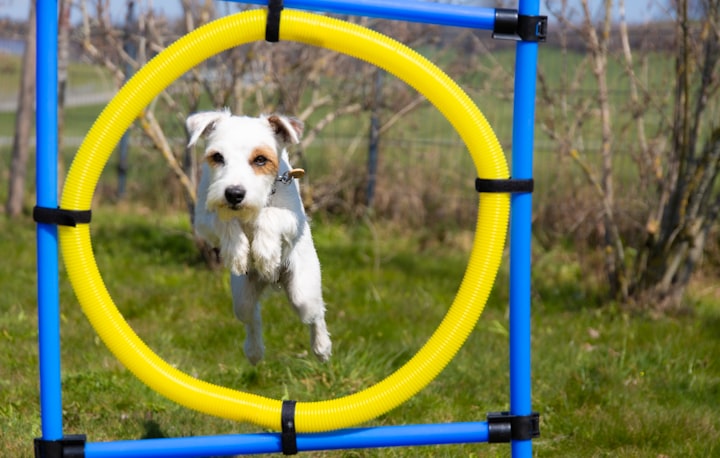
Dogs and humans are said to have comparable visual perspectives and perceive the world similarly. However, this is false for a number of reasons. First off, because we are taller than dogs, we can see terrain much more clearly.
Dogs, on the other hand, do not need to move their heads when scanning the scene since their eyes are positioned more laterally on the head, resulting in a larger visual angle.
The ability to focus was affected by changes in head shape.
Directing the incoming picture of the target object into the fovea, the retina's point of sharp vision, is one way to help people concentrate on and attend to a target object.
The area of keen eyesight in most dogs with longish heads (dolichocephaly) gives the appearance of a horizontal stripe.
The anatomy of the retina has been impacted by selection for dogs with short heads (brachycephaly), and as a result, several breeds, including pugs, have developed an area in the eye that resembles the fovea.
Color vision: Dogs have limited color vision compared to humans. They primarily see the world in shades of blue and yellow, and they have difficulty distinguishing between red and green. This is because they have only two types of color receptors (cones) in their retinas, whereas humans have three. This limited color perception means that dogs see a more muted and less vibrant world.
Night vision: Dogs have excellent night vision due to a high number of rod cells in their retinas. These rod cells are sensitive to low levels of light and allow dogs to see in dim lighting conditions. In fact, dogs can see much better than humans in the dark.
Motion detection: Dogs have a keen ability to detect motion. Their eyes are adapted to pick up movement quickly, making them excellent hunters and trackers.
Peripheral vision: Dogs have a wider field of view than humans. While humans have a field of vision of approximately 180 degrees, dogs have a field of view of around 240 degrees, allowing them to see more of their surroundings without moving their heads.
Depth perception: Dogs have some depth perception, but it is not as advanced as humans. They rely more on motion, parallax (the difference in the position of objects in each eye's field of view), and their sense of smell to judge distances.
Visual acuity: Dogs' visual acuity is not as sharp as humans. They see things in a more blurred or fuzzy way, especially objects at a distance. Their visual acuity is estimated to be roughly 20/75, while a human with normal vision has 20/20 vision.
Flicker perception: Dogs have a higher flicker perception threshold than humans, which means they can detect rapid movements or changes in light more easily. This is one reason why they may react to television screens or other displays differently from humans.
In summary, dogs have a unique visual system that prioritizes motion detection, low-light vision, and wide peripheral vision over color perception and visual acuity. Their vision is adapted to their evolutionary needs as predators and companions, allowing them to excel in activities like hunting and navigating in various lighting conditions.
Use hand signals and body language: Dogs are highly attuned to body language and hand signals. Incorporating these cues can be more effective than relying solely on verbal commands.
Choose toys and objects with contrasting colors: Since dogs have limited color vision, using toys and training objects with strong color contrasts, such as blue and yellow, can make them more visible and engaging to your dog.
Be patient with their depth perception: When introducing your dog to new environments or objects, be mindful of their depth perception limitations. Allow them to approach and investigate at their own pace.
Use motion and sound: Dogs are sensitive to motion and sound, so incorporating movement and noises into training exercises or playtime can be especially engaging for them.
By understanding and accommodating your dog's visual capabilities, you can enhance your communication and relationship with your furry friend, making it easier for them to navigate and enjoy the world around them.
About the Creator
Amin17
My name is Naggara Amin
I have been working in the field of online affiliate marketing for three years






Comments
There are no comments for this story
Be the first to respond and start the conversation.